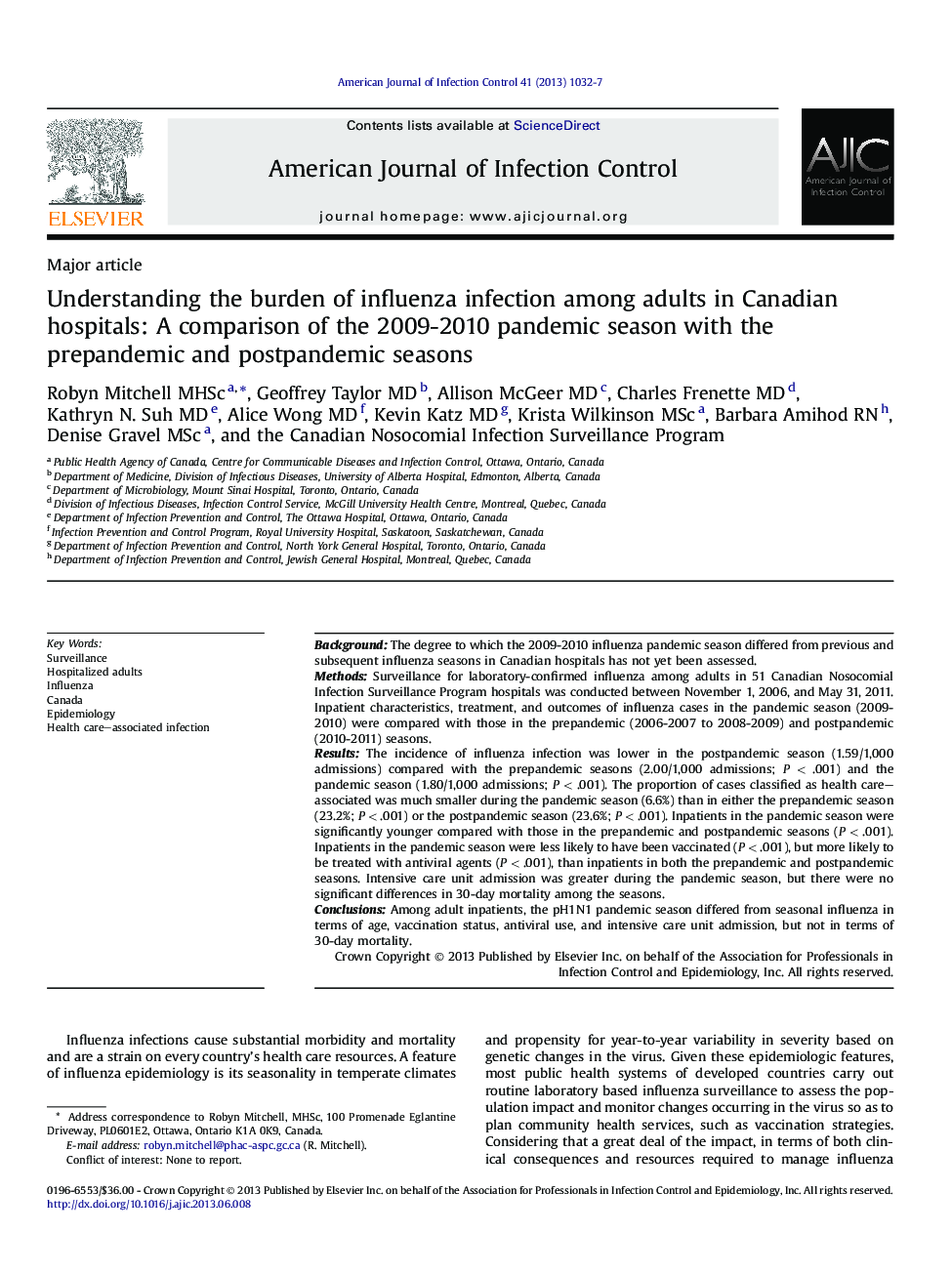| Article ID | Journal | Published Year | Pages | File Type |
|---|---|---|---|---|
| 2639549 | American Journal of Infection Control | 2013 | 6 Pages |
BackgroundThe degree to which the 2009-2010 influenza pandemic season differed from previous and subsequent influenza seasons in Canadian hospitals has not yet been assessed.MethodsSurveillance for laboratory-confirmed influenza among adults in 51 Canadian Nosocomial Infection Surveillance Program hospitals was conducted between November 1, 2006, and May 31, 2011. Inpatient characteristics, treatment, and outcomes of influenza cases in the pandemic season (2009-2010) were compared with those in the prepandemic (2006-2007 to 2008-2009) and postpandemic (2010-2011) seasons.ResultsThe incidence of influenza infection was lower in the postpandemic season (1.59/1,000 admissions) compared with the prepandemic seasons (2.00/1,000 admissions; P < .001) and the pandemic season (1.80/1,000 admissions; P < .001). The proportion of cases classified as health care–associated was much smaller during the pandemic season (6.6%) than in either the prepandemic season (23.2%; P < .001) or the postpandemic season (23.6%; P < .001). Inpatients in the pandemic season were significantly younger compared with those in the prepandemic and postpandemic seasons (P < .001). Inpatients in the pandemic season were less likely to have been vaccinated (P < .001), but more likely to be treated with antiviral agents (P < .001), than inpatients in both the prepandemic and postpandemic seasons. Intensive care unit admission was greater during the pandemic season, but there were no significant differences in 30-day mortality among the seasons.ConclusionsAmong adult inpatients, the pH1N1 pandemic season differed from seasonal influenza in terms of age, vaccination status, antiviral use, and intensive care unit admission, but not in terms of 30-day mortality.
